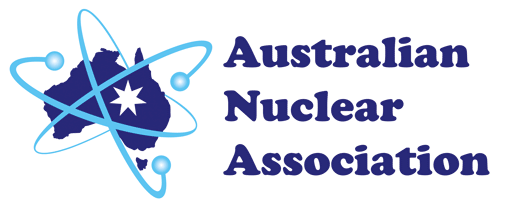ANA Statement on Nuclear Power
Nuclear Power for a Low Carbon Energy Future
October 2016
The Australian Nuclear Association strongly supports the use of nuclear power for Australia as a low carbon generator of electricity and as a low carbon source of heat for industry.
By adding nuclear power to our energy future, Australia will be able to meet our international obligations and provide a secure and vital economic future for the Nation.
In most developing and many developed countries nuclear power is an essential component of the electricity supply. It’s our continuing reliance upon fossil fuels in all segments of our primary energy delivery that must change and nuclear power is key to the provision of a diverse range of low carbon energy options.
The time is right to replace Australia’s aging fleet of coal fired power stations, some of which are the most polluting on the planet with modern Generation III+ nuclear power plants. Most importantly as demonstrated in France, nuclear power is capable of providing electricity for powering a modern highly industrialised nation. The carbon intensity of nuclear derived electricity in France is less than one twentieth of Australia’s emissions levels. Our increasing need for desalination and night time charging of electric vehicles will ideally match these modern nuclear reactors. As our grid grows we can continue to meet that challenge with small modular reactors especially in remote locations where only air cooling is available.
Innovative high temperature Generation IV reactors can address our need to synthesise transport fuels and supply much needed process heat for chemical and metal processing. The availability of this high temperature process heat gives opportunities for innovation within Australia to develop new means of manufacturing fertilisers, synthesise hydrocarbons and maintain our industrial needs. And along the way these Generation IV reactor will burn stockpiles of nuclear waste and greatly reduce the long term nuclear legacy.
To achieve these innovations Australia will need to address the design and operation of our national electricity market. Around the globe from Germany to the UK to the United States these liberalised markets have worked against capital intensive but low levelised cost of electricity solutions. This is causing investors to avoid the energy sector. Adaptation has occurred in the United Kingdom through the use of contracts for difference and payment of reliability incentives to restore market confidence.
Similar innovations are required in Australia if we are to create an investment environment for baseload low carbon technology and not burden future generations with global warming and pollution.
Nuclear power provides the world with safe electricity power generation based on over 15,000 reactor years of operation since the first commercial power reactor in 1956. There are 447 nuclear power plants connected to the grid in 31 countries, with an addition 59 nuclear power reactors under construction and 164 nuclear power reactors on order or planned with approvals, funding or major commitment in place [WNA March 2017]. Current nuclear technology can certainly meet the World’s needs for carbon emission reductions and the nuclear fuel cycle has even greater potential for industrial progress and environmental protection.
Nuclear power is essential if Australia is to reduce its primary energy emissions to meet its international obligations and prevent dangerous global warming.

